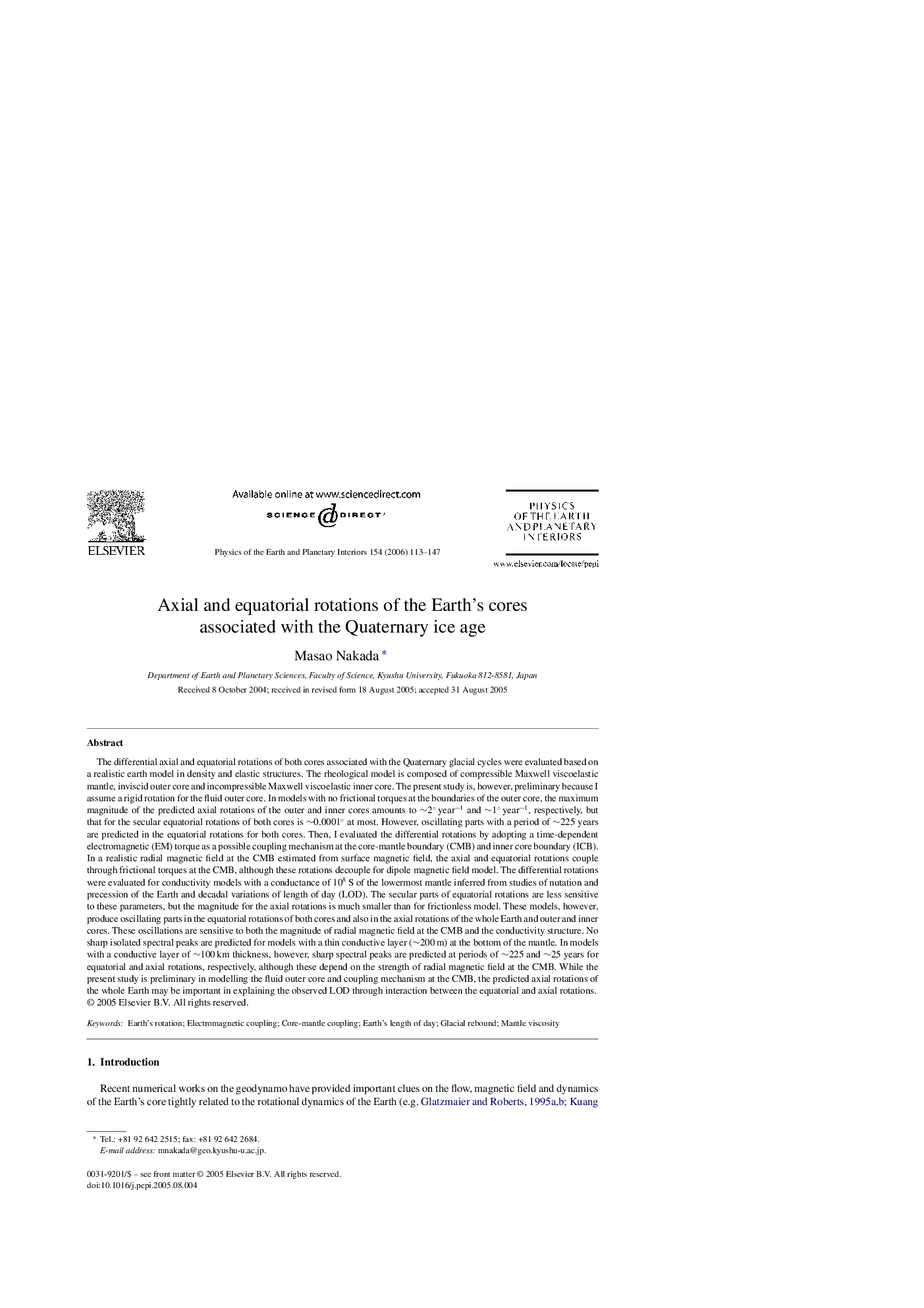| کد مقاله | کد نشریه | سال انتشار | مقاله انگلیسی | نسخه تمام متن |
|---|---|---|---|---|
| 4742753 | 1641608 | 2006 | 35 صفحه PDF | دانلود رایگان |

The differential axial and equatorial rotations of both cores associated with the Quaternary glacial cycles were evaluated based on a realistic earth model in density and elastic structures. The rheological model is composed of compressible Maxwell viscoelastic mantle, inviscid outer core and incompressible Maxwell viscoelastic inner core. The present study is, however, preliminary because I assume a rigid rotation for the fluid outer core. In models with no frictional torques at the boundaries of the outer core, the maximum magnitude of the predicted axial rotations of the outer and inner cores amounts to ∼2° year−1 and ∼1° year−1, respectively, but that for the secular equatorial rotations of both cores is ∼0.0001° at most. However, oscillating parts with a period of ∼225 years are predicted in the equatorial rotations for both cores. Then, I evaluated the differential rotations by adopting a time-dependent electromagnetic (EM) torque as a possible coupling mechanism at the core-mantle boundary (CMB) and inner core boundary (ICB). In a realistic radial magnetic field at the CMB estimated from surface magnetic field, the axial and equatorial rotations couple through frictional torques at the CMB, although these rotations decouple for dipole magnetic field model. The differential rotations were evaluated for conductivity models with a conductance of 108 S of the lowermost mantle inferred from studies of nutation and precession of the Earth and decadal variations of length of day (LOD). The secular parts of equatorial rotations are less sensitive to these parameters, but the magnitude for the axial rotations is much smaller than for frictionless model. These models, however, produce oscillating parts in the equatorial rotations of both cores and also in the axial rotations of the whole Earth and outer and inner cores. These oscillations are sensitive to both the magnitude of radial magnetic field at the CMB and the conductivity structure. No sharp isolated spectral peaks are predicted for models with a thin conductive layer (∼200 m) at the bottom of the mantle. In models with a conductive layer of ∼100 km thickness, however, sharp spectral peaks are predicted at periods of ∼225 and ∼25 years for equatorial and axial rotations, respectively, although these depend on the strength of radial magnetic field at the CMB. While the present study is preliminary in modelling the fluid outer core and coupling mechanism at the CMB, the predicted axial rotations of the whole Earth may be important in explaining the observed LOD through interaction between the equatorial and axial rotations.
Journal: Physics of the Earth and Planetary Interiors - Volume 154, Issue 2, 16 February 2006, Pages 113–147